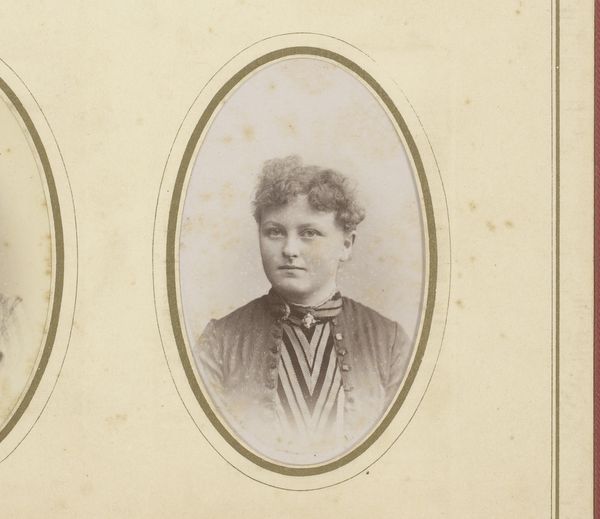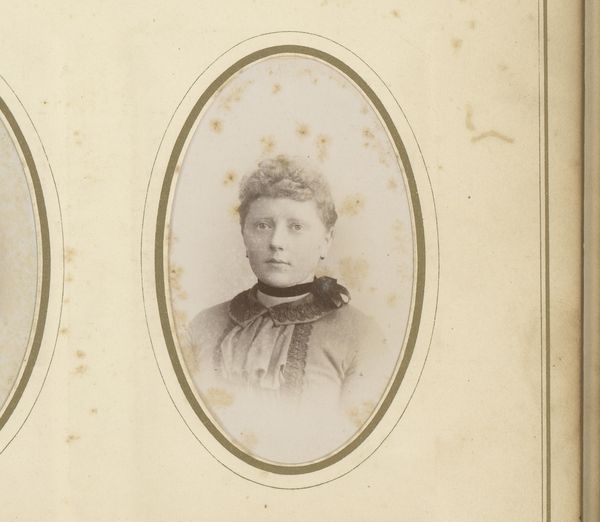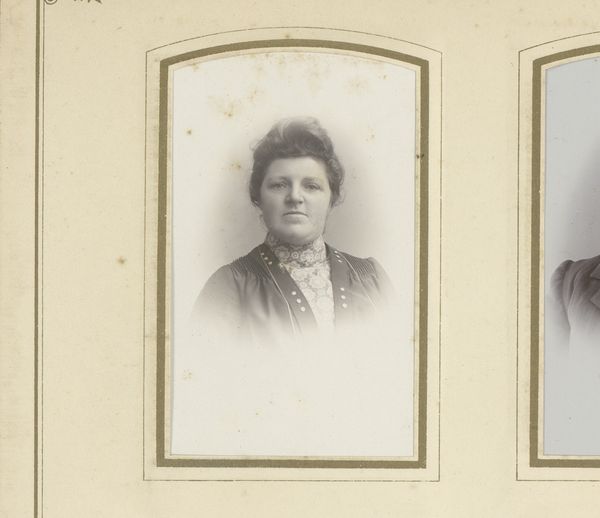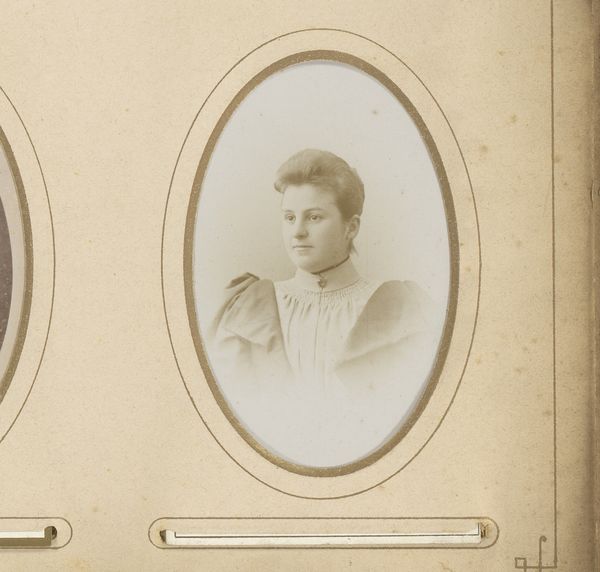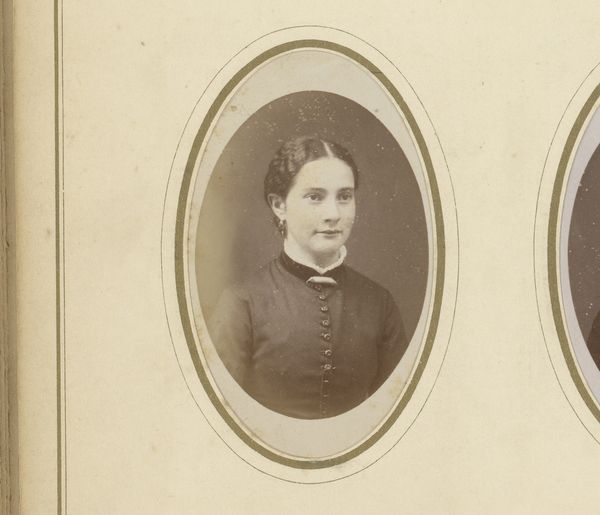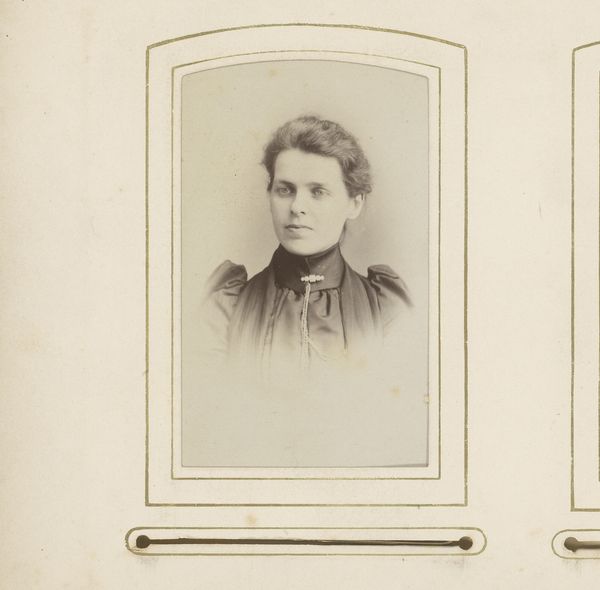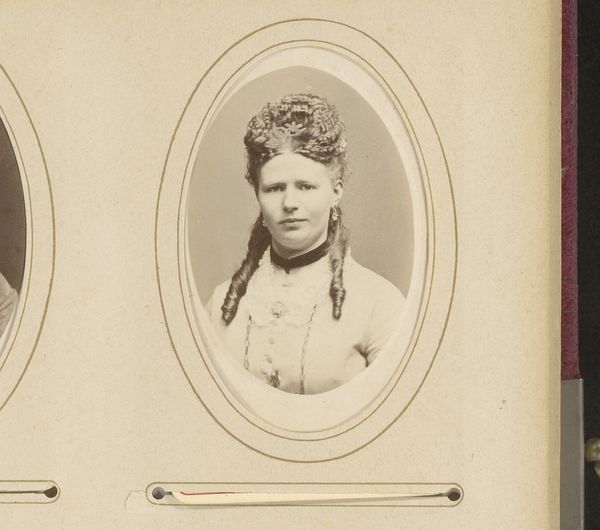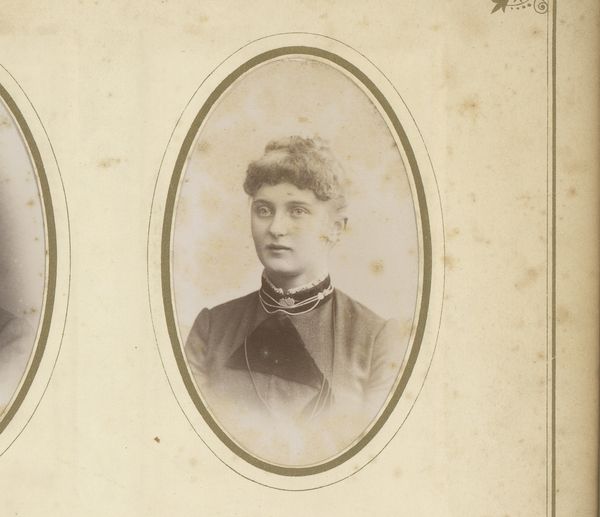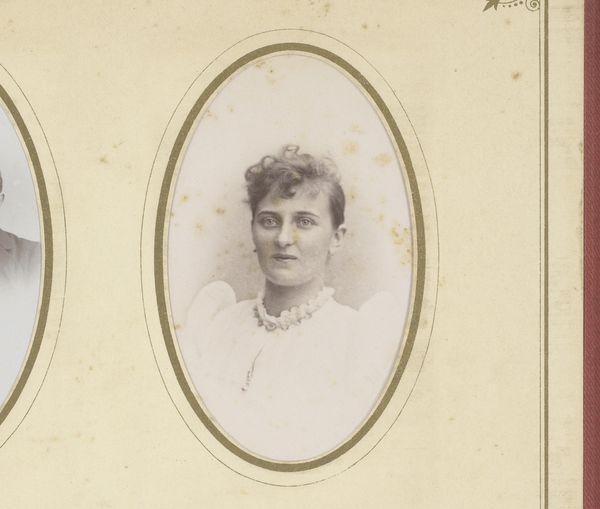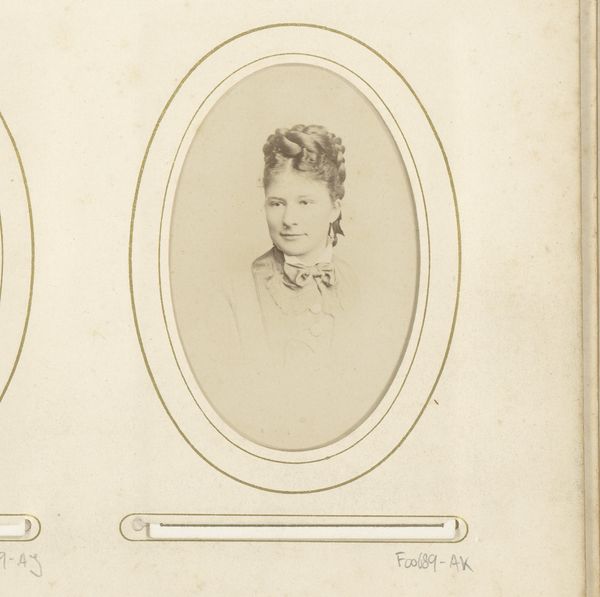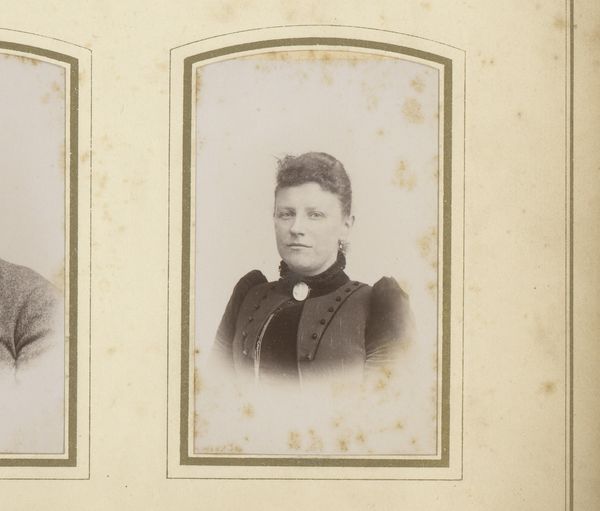
Dimensions: height 87 mm, width 53 mm
Copyright: Rijks Museum: Open Domain
Editor: This is "Portrait of a Young Woman with Necklace" by the Sanders Brothers, probably taken between 1860 and 1900. It's a gelatin-silver print and part of a photo album page. There is an austere, somber mood... What do you see when you look at this work? Curator: The materiality of gelatin-silver prints created a market, not just for portraits, but for standardized techniques of capturing light and shadow. It isn't simply an image of a woman; it’s the result of chemical processes and the skilled labor necessary to produce photographic emulsions, coat paper, and control exposures. Think about the social context: suddenly photography allowed widespread availability of portraits. Editor: So, less about who the woman *is*, and more about the mechanics that allow us to see her at all. It makes sense! How would you say this portrait departs from painted portraits? Curator: Prior to this, portraits were mainly for the upper classes who could afford painted works. Photography, although not *cheap* per se, gave access to more classes of people, becoming an increasingly commercialised and popular way to materialise an image. Notice too that it challenges artistic boundaries -- previously high art being painting and now this new kind of image creation. What do you make of her clothing? Editor: That's interesting; her clothes definitely communicate her class. She doesn't look particularly wealthy but presentable. You're right - I wouldn't necessarily consider the social aspect that led to image creation! I will keep an eye out from now on! Curator: Consider also the albumen process involved with creating a gelatin print – it involved a huge number of eggs, sourced from somewhere, a process that had implications!
Comments
No comments
Be the first to comment and join the conversation on the ultimate creative platform.
